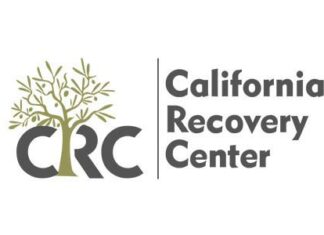5,000,000 years in the making
Rocklin, Calif. – According to Sierra College Geology Professor Dick Hilton, the valley started to form five million years ago as the Sierra range lifted and tilted westward. Runoff streams wore down millions of years of rock and gravel deposits and eventually cut the valley down to granite bedrock. Saber tooth cats, long necked camels and mammoths drank from the valley’s creek until about 12,000 years ago.
Mid 19th Century Euro-American settlers named it ‘Clover Valley.’ Boulder Ridge borders it on the west and Clover Valley Hills on the east. The valley slopes southward four miles from its head at the Clover Valley Reservoir to its abrupt end at Midas Avenue near the Sunset Whitney Country Club on Midas Avenue. Sierra College Boulevard crosses the valley on an elevated roadbed about a mile south of the reservoir.
Recent archeological finds in the middle of the valley indicate earliest human habitation at about 7,000 years ago, although archeological finds high on the western slopes of the Sierra show that humans might have been in the Rocklin area as long as 10,000 years ago.
Maidu culture
About 3,000 years ago a distinctly new culture, the Maidu, occupied the northeastern Sacramento Valley and the adjacent western Sierra. Rocklin area Maidu were among a group that anthropologists named ‘Southern Maidu.’ They established permanent villages but also moved among the Sierra foothills and the Sacramento Valley to exploit seasonal ripening and the availability of game. They called themselves ‘Nisenan’, a word meaning ‘the people’ in their language.
Valley Nisenan built sunken 10-15 foot diameter dome-shaped homes with earth or tule roofs. Larger villages, which could number up to 500 people, included sweathouses where men talked, sang and sweated away their concerns. Fifty foot diameter ceremonial dance houses and acorn granaries were also common. Archeologists have seen evidence of some of these types of buildings at sites in Clover Valley.
In the late 1820’s Euro-Americans established camps on Nisenan lands and brought their diseases to the area. In 1833 about 75% of the Valley Nisenan perished from a plague believed to be malaria brought here by Hudson’s Bay Company trappers. Some Nisenan survivors fled to the hills. A few stayed behind and joined other tribes working at Sutter’s Fort in the late 1830’s.
The gold rush brought hoards of Euro-Americans to the Sierra foothills. The ensuing widespread destruction of villages and persecution and killing of the Nisenan permanently disrupted the Nisenan culture.
Joel Parker Whitney befriended and regularly had contact with a small band of Clover Valley Nisenan at his Spring Valley Ranch on the west side of Boulder Ridge. The road to Whitney’s ‘The Oaks’ mansion crossed southern Clover Valley Creek over a massive granite bridge which is now the centerpiece of Clover Valley Park.
Whitney fed the Nisenan and observed and wrote about their life ways including their method of harvesting and drying grasshoppers and their method of mud bathing.
By 1870 only one Nisenan appeared on the Rocklin census. However as late as 1981 some of Rocklin’s old-timers could remember stories handed down from their parents and grandparents of Nisenan women employed to wash clothes in Rocklin in the late 1800’s
Some of today’s Rocklin old-timers remember talk of a Nisenan encampment in downtown Rocklin as late as 1904.
After California outlawed hydraulic gold mining in 1884, enabling clean water for irrigation, Whitney and neighboring ranchers subdivided 5,000 acres, along the Loomis/ Penryn/Newcastle corridor, including most of Clover Valley, and formed the Placer County Citrus Colony. The Colony incorporated in 1888 for the purpose of selling small citrus ranches to Europeans, mainly Englishmen.
Chinese laborers
Chinese laborers cleared the land and constructed water ditches including the Antelope Ditch, parts of which still deliver water to Clover Valley Creek to preserve wildlife and irrigate the Sunset Whitney golf course.
By 1891 about 50 Colony ranches were producing mainly deciduous fruit because citrus trees did not thrive in South Placer County’s shallow soil. Fruit sales slowed significantly with the depression of the mid-1890’s and Colony ranchers started to abandon their investments.
The Colony’s death knell came by 1899 when malaria struck dozens of families and scared many away. The water that had brought a promising future for South Placer County agriculture had also helped breed mosquitoes that doomed the Colony.
Remnants of Citrus Colony ranches in Clover Valley are sparse. One resident in the middle of the valley can remember seeing an old citrus tree, possibly a citrus colony remnant, near his home until a frost killed it in the 1970’s. Outdoorsman writer Val Koberlein lived in a two-room cabin in the middle of Clover Valley as a child in the late 1930s and remembers vestiges of abandoned citrus colony ranchland and citrus orchards where he hunted Quail with his mother. A recent archeological survey found an old building foundation and a stone corral but these might have been remnants of Whitney Ranch livestock operations.
20th century
During the 20th century the northern mile and a half of Clover Valley developed into mostly rural residential housing. Dense residential development of the valley started in 1963 after Sunset International Petroleum Corporation bought the southern 12,000 acres of the Whitney Ranch and started to build an upscale and self-contained city near Rocklin. Sunset intended to build 32,000 residences, medical facilities, shopping malls, schools and factories for light industry. They also planned to build a regional airport near the site of today’s Thunder Valley Casino. The project was named ‘Sunset City.’ It included a championship sports complex called Sunset Oaks (now Sunset Whitney) Country Club on Midas Avenue and Rocklin’s first shopping center at the corner of Pacific and Sunset.
During the mid 1960’s, Sunset built and sold homes on the eastern floor of Clover Valley along a half mile long strip northward from the valley’s foot at Midas Avenue. Sunset Oak’s Hall of Fame golf pro Paul Harney lived on Clover Valley Road at the northern extent of this development. Sunset intended to build a shorter executive golf course on the adjacent western floor of Clover Valley, an extension of the Sunset Oaks course. They abandoned that plan when lot and homes sales lagged in the mid 1960’s. In the late 1960’s Sunset sold off large chunks of their holdings. Development of Clover Valley’s southern end was at hiatus until other developers started building on Sunset’s intended golf course site and more than a mile northward along both sides of the Valley in the 1970’s. Expensive homes now cover this property.
The tunnel intended to carry golf carts from the Sunset Oaks clubhouse under Midas Avenue to Sunset Oak’s Clover Valley extension now carries Clover Valley Creek water southward to Antelope Creek.
Clover Valley Today
Today Clover Valley is in the path of the Sacramento region’s population boom. The proposed Bickford Ranch development impinges on the valley from Boulder Ridge at the valley’s upper end near the Clover Valley Reservoir. The City of Rocklin annexed a large tract of land in the middle of the valley and as of 2008 a developer is preparing to build more than 400 homes there.
Clover Valley started to form 5 million years ago. Its prehistoric people were in the Rocklin area for at least 7,000 years and they pique our curiosity. The Valley was a catalyst for development of South Placer County’s agriculture. It was an important part of Rocklin”s expansion into Whitney”s Spring Valley Ranch and it is a permanent asset of our community and its future.
related
- Clover Valley Park in Rocklin
- Clover Valley in Rocklin closer to preserving 487 acres in perpetuity
- Rocklin History Tour – Clover Valley Bridge
(21+ years strong)
Welcome to the brighter side!
Get in front of local customers! 24/7 (365)























